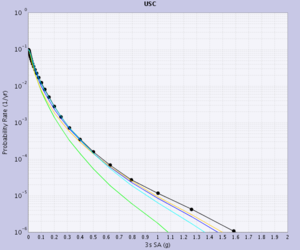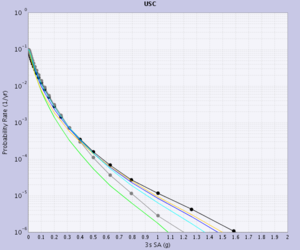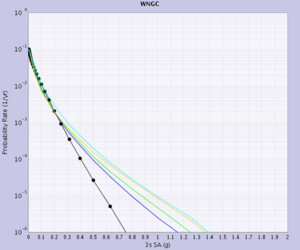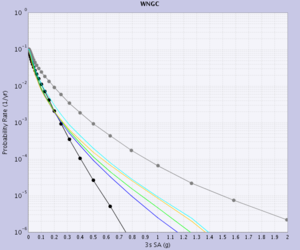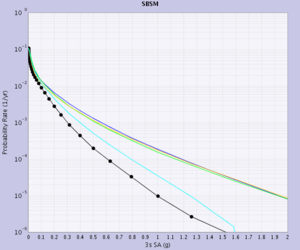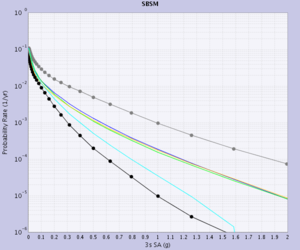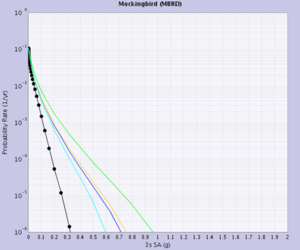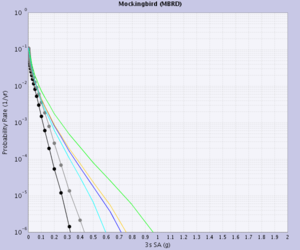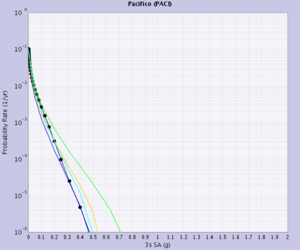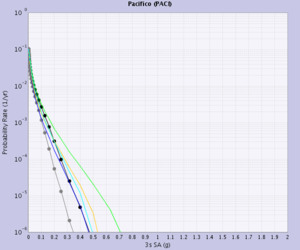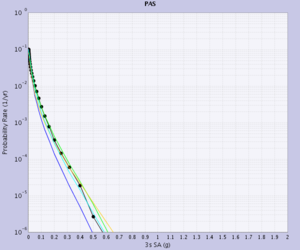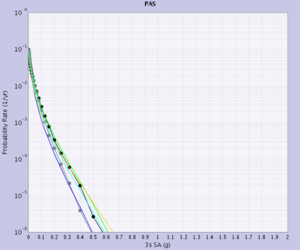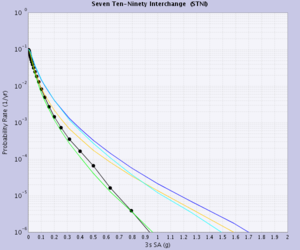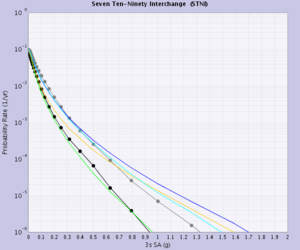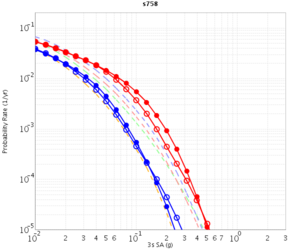CyberShake 1.2
CyberShake 1.2 introduces the use of CyberShake hazard curves using CVM-H v11.2. This requires recalculation of the SGTs.
CyberShake 1.1 introduced a second generation rupture generator to the CyberShake calculation. Now, when we compare CyberShake hazard curves to one another, we must define both the CVM used (CVM-S4 or CVM-H), and which rupture set was used (CyberShake 1.0 or CyberShake 1.1).
The following curves compare CyberShake hazard curves that both use the CyberShake 1.1 rupture set. The differences between the curves are attributed to only the different CVM's used.
Dual Comparison Results
black = CVM-H curve
gray = CVM-4 comparison curve
blue = Campbell & Borzorgnia (2008)
green = Boore & Atkinson (2008)
yellow = Chiou & Youngs (2008)
cyan = Abrahamson & Silva (2008)
| Site | Run ID | Rupture Variation | 3s SA curve | Comparison curve with CVM-4 |
|---|---|---|---|---|
| USC | 778 | 4 | ||
| WNGC | 781 | 4 | ||
| SBSM | 782 | 4 | ||
| MBRD | 783 | 4 | ||
| PACI | 784 | 4 | ||
| PAS | 785 | 4 | ||
| STNI | 786 | 4 |
Quad Comparison Results
black with circles = CVM-4 curve, old rupture variations
gray with circles = CVM-4 curve, new rupture variations
gray with triangles = CVM-H curve, old rupture variations
gray line = CVM-H curve, new rupture variations
blue = Campbell & Borzorgnia (2008)
green = Boore & Atkinson (2008)
yellow = Chiou & Youngs (2008)
cyan = Abrahamson & Silva (2008)
| Site | Run IDs | Comparison curve |
|---|---|---|
| s758 (near San Onofre) | 576, 789, 795, 788 |
